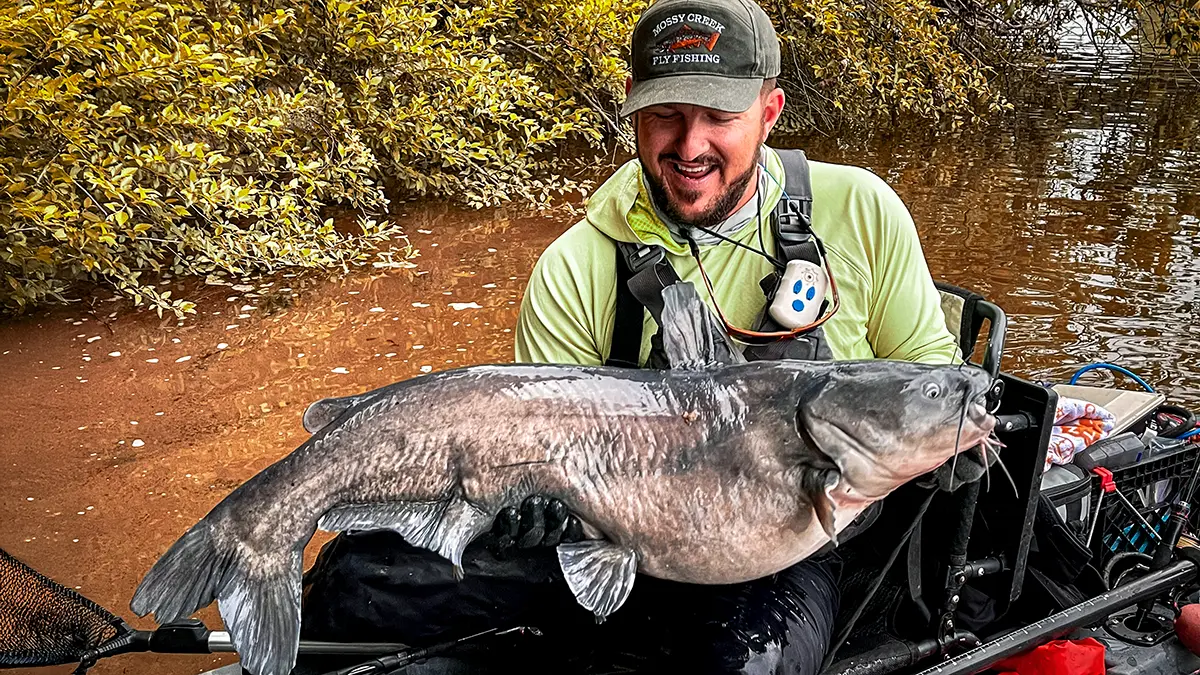There are a precious few things in the fishing world that just plain work. One of those is the tried and true slip sinker rig. Made up of a few simple components, this rig is a must when targeting fish that are related very closely to the bottom. While many bottom fishing rigs are effective, the slip sinker rig, otherwise known as the egg sinker slip rig, excels because fish can inhale a bait and begin to make a run, without ever feeling the sinker’s weight.
It does not take a lot of digging to find this rig, or variations of it, regionally dispersed throughout North America. From the trophy catfish hunters of the lower Midwest to even the deck of your favorite Elite Series pro, the slip sinker rig is everywhere.
Ready to give it a try? Let’s break down everything you need to get started!
Slip Sinker Rig Components
Simply put, the slip sinker rig consists of a mainline, slip sinker, bead, barrel swivel, leader material, and a hook. Of course, all these components can be customized to fit specific conditions or situations.
Mainline
These days, I almost always use a high-quality braided line, like PowerPro, as my mainline. This is especially true when I am fishing on or near the bottom, as the braid provides abrasion resistance, which comes in handy around rocks, wood, or even rugged aquatic vegetation.
Slip Sinker
As previously mentioned, the slip sinker rig is designed so a fish can effectively move away from the sinker without dragging it. This means your style or sinker options are limited to free-sliding varieties, which include options like egg sinkers, bank-style sinkers, no-rolls, bullets, and frog tongues.
While the egg sinker is certainly the most popular, the various other styles all have their place. For example, in heavy currents, a no-roll style sinker will lay flat on the bottom and not be as easily washed downstream. Additionally, when combined with a sinker slide, a bank sinker is deadly, because the mainline is not going through the weight directly, providing far more sensitivity to the angler.
Bead
A bead acts as a cushion between your sliding weight and the knot connecting your mainline to your leader. Think of it this way: every time you cast, the weight slams against the knot, and over time, that can weaken it. The bead prevents that. I like to use a glass bead, if I can. Not only does it protect the knot, but the clicking sound it makes when the weight hits can be very attractive to fish.
Barrel Swivel
Don’t skimp on your barrel swivels. They’re the connection between your mainline and leader, and a weak swivel can cost you fish. I’ve seen cheap swivels fail even on smaller fish. For reliable performance, stick with Spro Power Swivels.
Leader Material
For most applications, a leader made up of a high-grade fluorocarbon leader material is commonplace. Monofilament leader also has its place, considering it is far softer, cheaper, and all-around easier to work with.
Ideal leader length and strength depend on where and what you’re fishing for. If you’re after line-shy fish like trout or salmon, go long and light. But if you’re wrestling catfish out of heavy cover like rocks or timber, a short, heavy leader is the way to go. You need something tough enough to haul them out of those snags.
Hook
Choosing the right hook, just like leader material, depends on the fishing situation. One thing I will emphasize: if you’re using big live bait on a slip sinker rig, learn how to snell your hooks. It’s a super strong connection, and it keeps the line and hooks perfectly aligned for better hooksets. This is especially critical when you’re using circle hooks with fishing moving away from you.
How to Tie a Slip Sinker
Step #1: Thread Mainline Through Weight
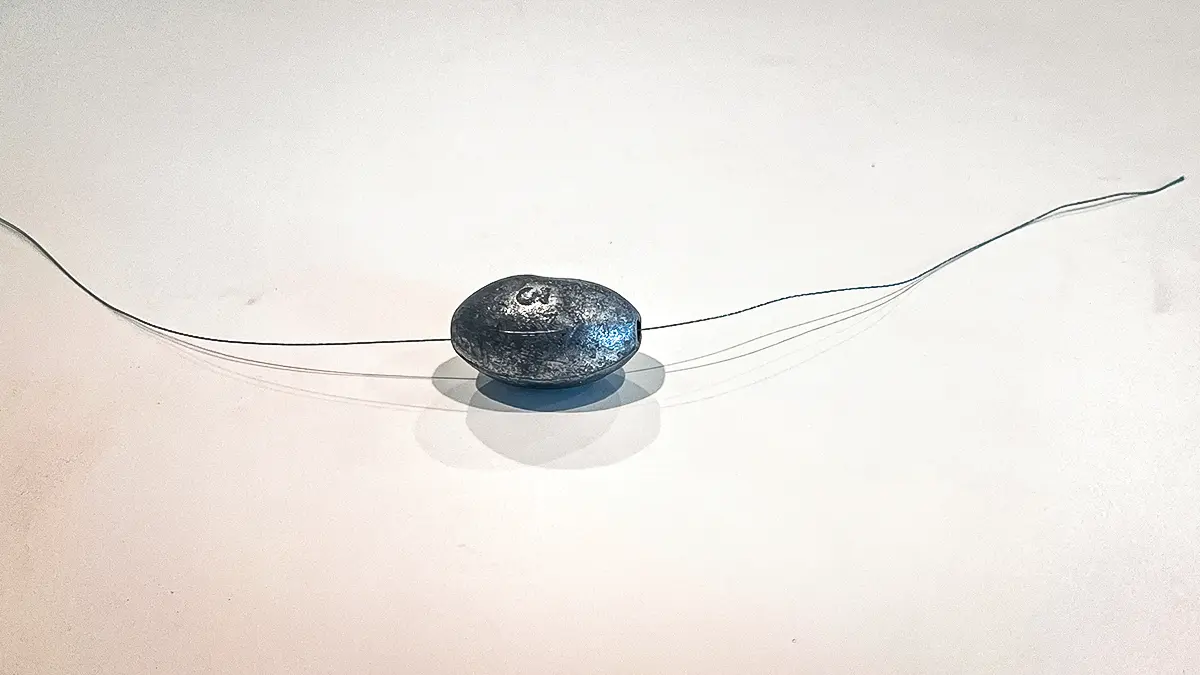
No matter what style weight you choose, it needs to be added to the mainline.
Step #2: Add Bead Below Weight
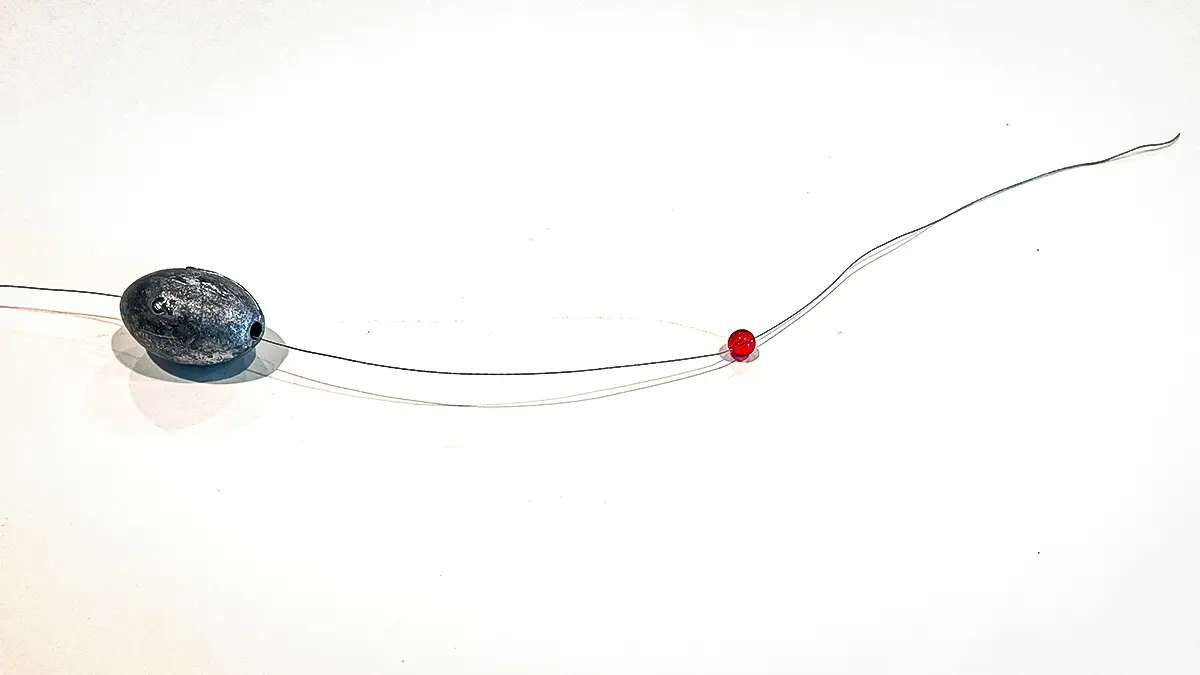
Making sure there is a bead between your weight and barrel swivel protects the knot.
Step #3: Attach Barrel Swivel to Mainline
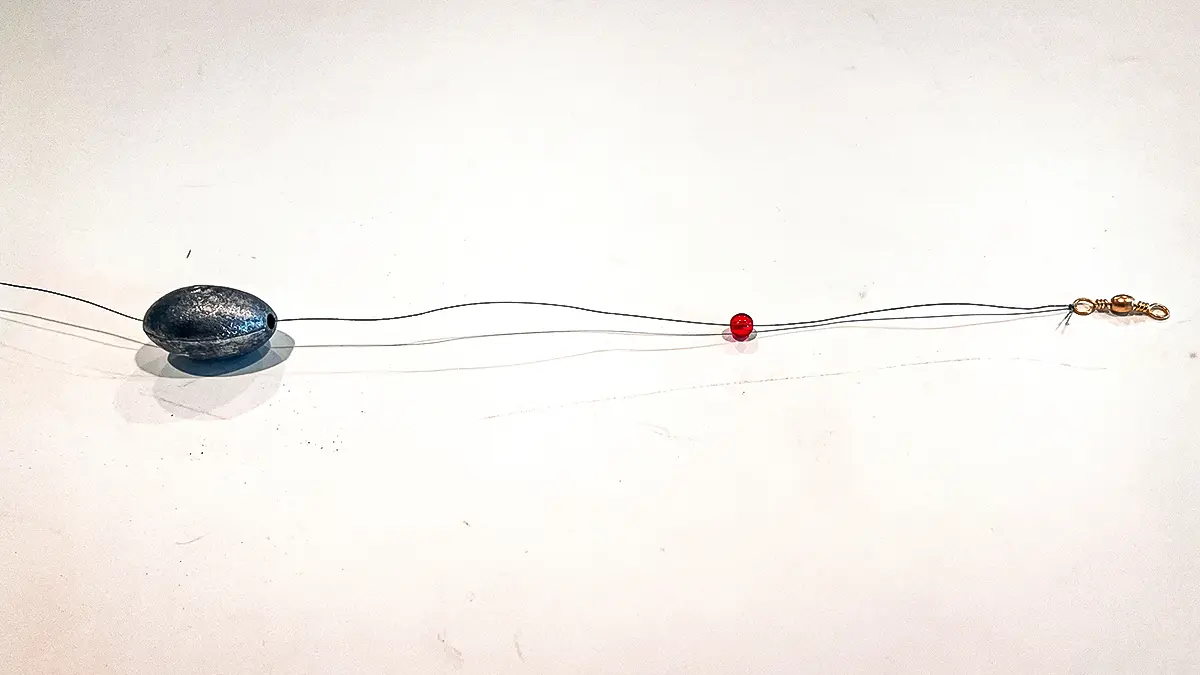
The barrel swivel serves as the connection between the mainline and the leader.
Step #4: Tie Leader to Barrel Swivel
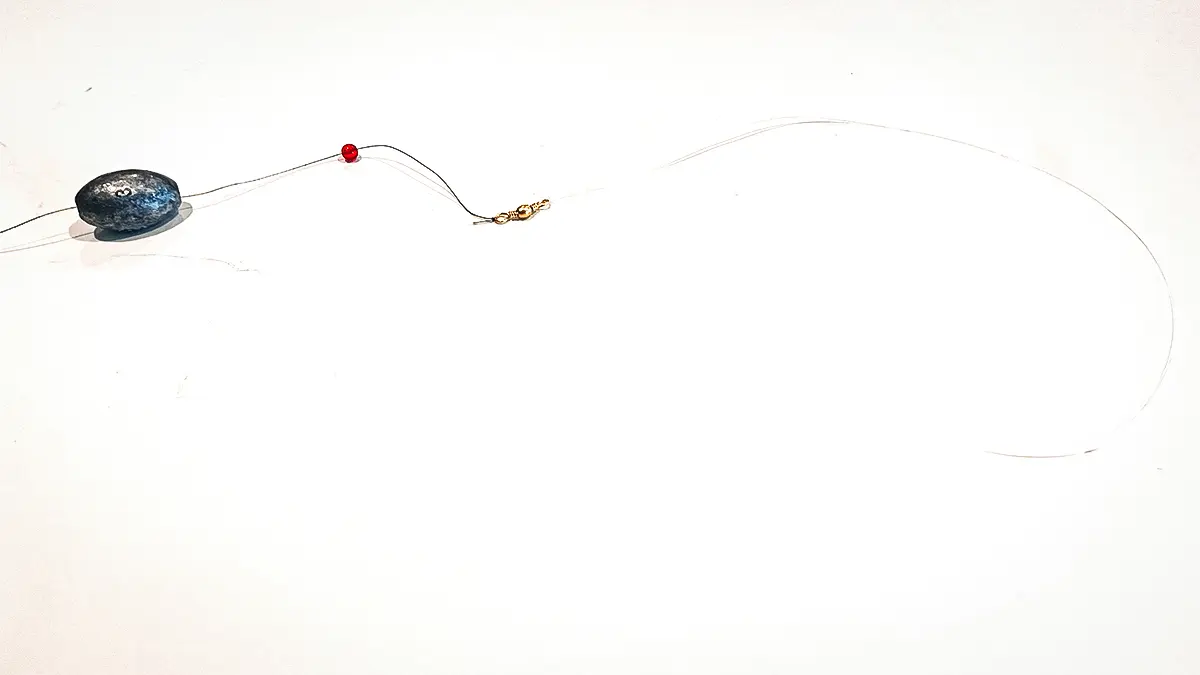
Using a section of leader-specific material allows anglers to customize their presentation to target species.
Step #5: Add Hook of Choice
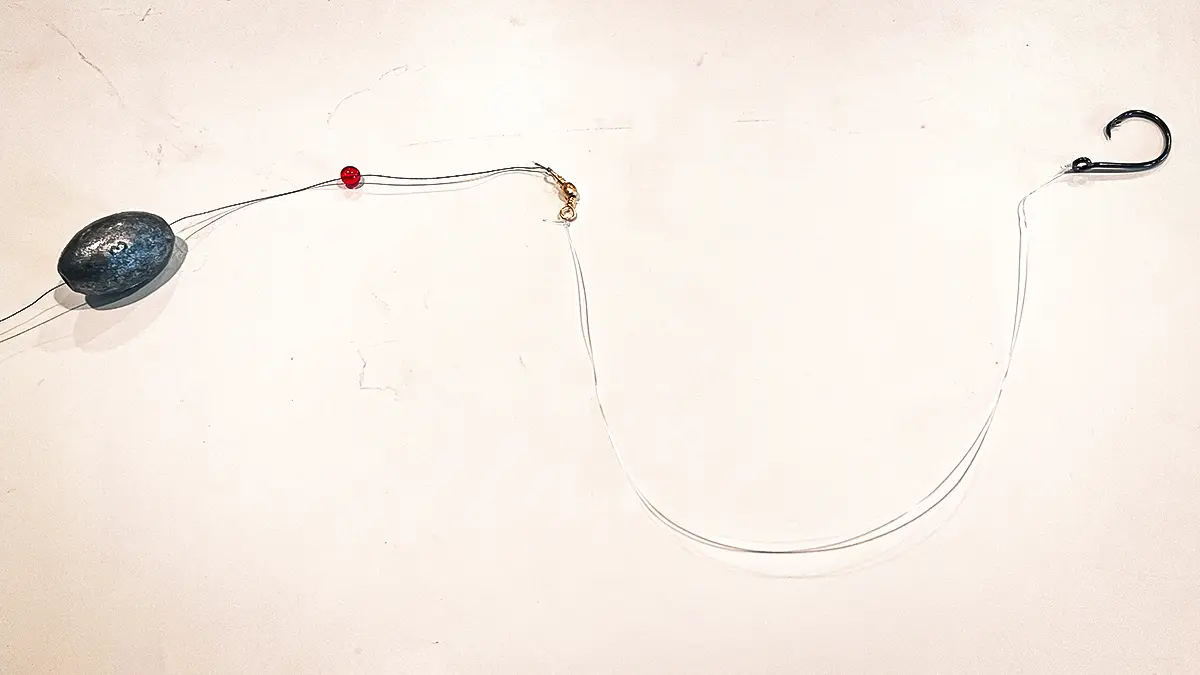
Octopus, straight shank, circle, and even treble-style hooks can all be used with a slip sinker rig.
How To Fish a Slip Sinker Rig
The applications for a slip sinker rig are endless, because many species can be duped with a live-bait offering presented towards the bottom. I have been leaning heavily on the slip sinker rig to help me fish deep creek holes in hopes of action-packed channel catfish outings. Large live bait, night crawlers, commercially prepared baits, crayfish, and even leeches are perfect baits for the rig.
To fish it, simply make a long cast and allow the weight to fully settle on the bottom before closing your bail. Especially for bank fishermen – the temptation might be to reel up all slack so you will be able to see any tick or tap on the bait, but remember, the whole point of the rig is to let the fish pull line through the weight, without feeling a thing. If I can, I prefer to leave slack in my line so fish have plenty of leash.
For maximum performance, use a bait runner reel, which is a spinning reel with a drag setting that allows the spool to spin freely with very little resistance. This kind of reel often has a noticeable clicking noise to alert anglers of a bite.
Once a bite is detected, slowly reel tight to the fish and allow it to continue moving with the bait before you set the hook. When using circle hooks, fish will often hook themselves after a hard initial run.
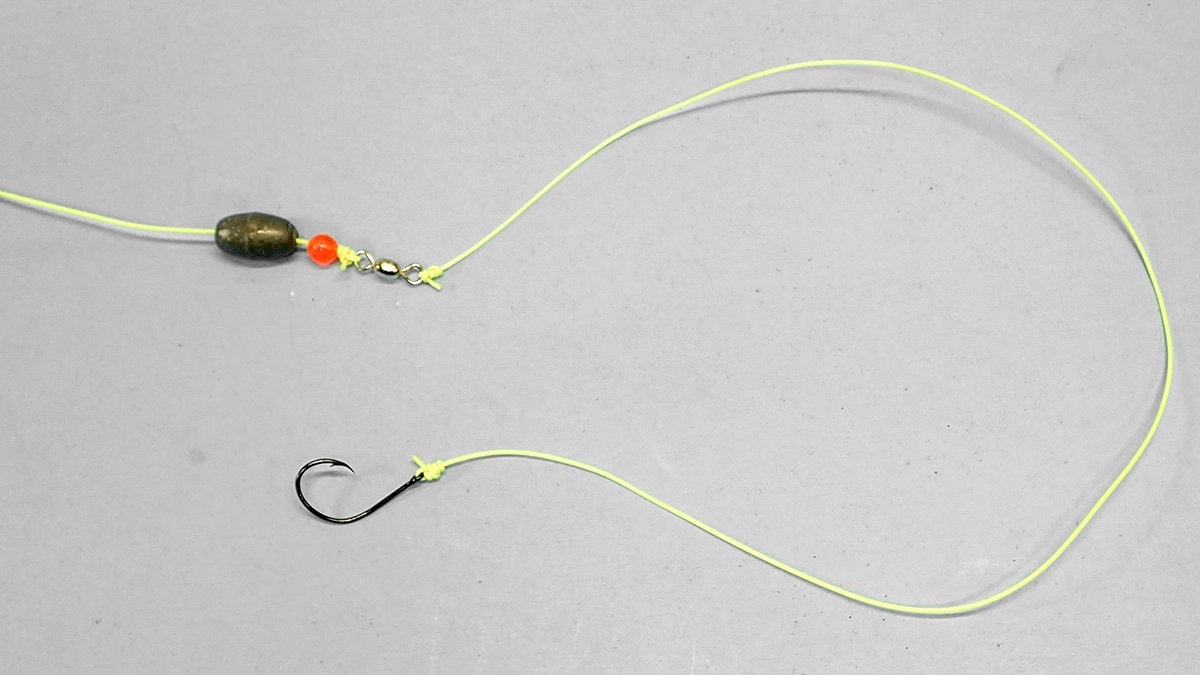
Extreme Versatility
Don’t be fooled into thinking the slip sinker rig is only reserved for folks fishing crawlers or shiners. The Carolina Rig, a staple for bass anglers looking to creep and crawl a Texas-rigged soft plastic along the bottom, is just a slip sinker rig that is living the high life on the deck of a bass boat.
From catfish in deep creeks to largemouth on grass flats, the slip sinker rig is a time-tested technique for presenting baits along the bottom. Its simple design, consisting of a sliding weight, swivel, leader, and hook, allows fish to take the bait without feeling resistance, leading to more hookups. Mastering this versatile rig and its various applications will undoubtedly improve your success on the water, no matter what species you’re targeting.


